IASbaba's Daily Current Affairs Analysis
Archives
(PRELIMS & MAINS Focus)
Syllabus
- Prelims – Science & Tech
In News:
- India approved a 5-year project to develop CRISPR to cure sickle cell anaemia (it mainly affects tribal population) as this technology has produced flawless results in clinical trials.
Milestones of the technology:
- Debojyoti Chakraborty and Souvik Maiti at CSIR’s Institute of Genomics have indigenously developed CRISPR-based therapeutic solution to sickle cell anaemia
- Japan has approved cultivation of tomato variety improved using CRISPR-based intervention.
- Victoria Cray who was suffering from sickle cell anaemia has now been cured using CRISPR- based solutions.
About CRISPR:
- It is a gene-editing technology that ‘edits’ the genetic code of living organisms using biochemical tools like specific proteins and RNA molecules; by introduction of a new gene, or suppression of an existing gene, through a process described as genetic engineering.
- CRISPR is short for Clustered Regularly Interspaced Short Palindromic Repeats, which is a reference to the clustered and repetitive sequences of DNA found in bacteria, whose natural mechanism to fight some viral diseases is replicated in this gene-editing tool.
- It opens up the possibility of ‘correcting’ genetic information to cure diseases, prevent physical deformities or to even produce cosmetic enhancements.
- Jennifer Doudna and Emmanuelle Charpentier won the Nobel prize for chemistry in 2020 regarding CRISPR.
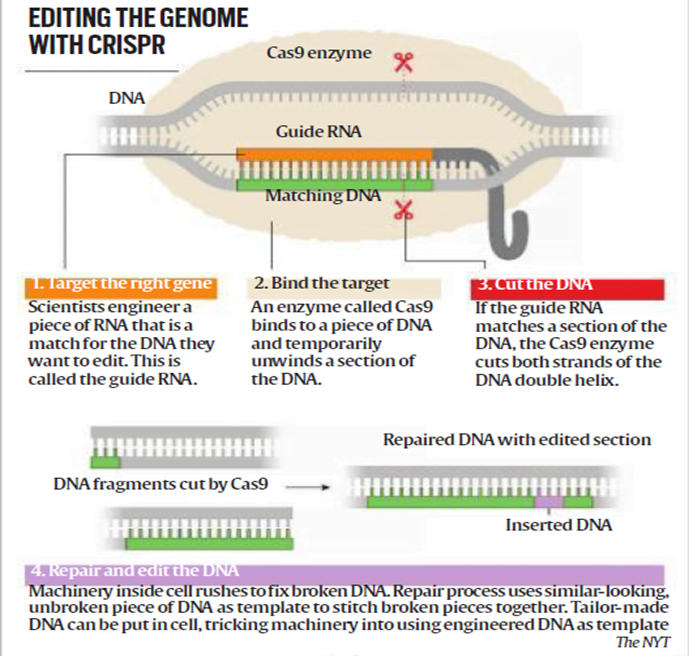
Steps:
- Identify troubled gene sequence
- An RNA molecule programmed to locate this sequence on the DNA strand (like ’find’ or ’search’ function).
- A special protein called Cas9 (also called ’genetic scissors’) breaks DNA strand at specific points to remove the bad sequence.
- Scientists intervene during the natural auto-repair process of the DNA strand by supplying the correct sequence of genetic codes, which attaches to the broken DNA strand. It is like cutting out the damaged part of a long zipper, and replacing it with a normally functioning part.
- It does not involve the introduction of any new gene from the outside.
- Its mechanism is often compared to the ’cut-copy-paste’, or ’find-replace’ functionalities in common computer programmes.
Applications:
It has near unlimited potential for permanent cures for some of the most intractable health disorders and improves the quality of human life with remarkable efficiency.
- Permanent cure to many diseases such as genetic diseases caused by unwanted changes or mutations in genes like sickle cell anaemia, eye diseases including colour blindness, several types of cancer, diabetes, HIV, and liver and heart diseases or hereditary
- Cure to deformities: arising out of abnormalities in gene sequences, like stunted or slow growth, speech disorders, or inability to stand or walk.
- Therapeutic solutions: Not in the form of a pill or drug. Instead, some cells of every patient are extracted, the genes are edited in the laboratory, and the corrected genes are then re-injected into the patient. The changes made are not passed on to the offspring
- Agriculture: to help develop genetically modified variants with specific desirable traits.
Way forward
The technology is not 100% precise and could induce few errors which may be passed to future generations.
A specific solution needs to be devised for every disease or disorder that is to be corrected.
Ethical dilemmas and potential for misuse of the technology must be considered around its development.
Source: Indian Express
Previous Year Questions
Q1. Consider the following pairs:
Terms seen in news Context/Topic
- Belle II experiment — Artificial Intelligence
- Blockchain technology — Digital/Cryptocurrency
- CRISPR – Cas9 — Particle Physics
Which of the pairs given above is/are correctly matched?
- 1 and 3 only
- 2 only
- 2 and 3 only
- 1, 2 and 3
Syllabus
- Prelims – Science & Technology
Key Points:
- The Ministry of Electronics and IT’s (MeitY’s) Startup Hub signed an agreement with social media giant Meta to launch an accelerator programme to offer grants to startups building services for the metaverse, a digital world which is a combination of virtual reality (VR) and mixed reality (MR) accessed through a browser or headset.
- The programme will support 40 early-stage startups working in extended reality (XR) technologies with a grant of Rs 20 lakh each.
- Young Indian Startups, especially from tier 2/3 cities, will play a significant role in emerging tech areas like Web 3.0, blockchain, AI, Metaverse etc. and will shape the future of Technology and the internet for India and the world.
What is extended reality (XR)?
- XR is an emerging umbrella term for all the immersive technologies.
- The ones we already have today—augmented reality (AR), virtual reality (VR), and mixed reality (MR) plus those that are still to be created.
- All immersive technologies extend the reality we experience by either blending the virtual and “real” worlds or by creating a fully immersive experience.
Augmented reality (AR)
- In augmented reality, virtual information and objects are overlaid on the real world.
- This experience enhances the real world with digital details such as images, text, and animation.
- One can access the experience through AR glasses or via screens, tablets, and smartphones. This means users are not isolated from the real world and can still interact and see what’s going on in front of them.
Virtual reality (VR)
- In contrast to augmented reality, in a virtual reality experience, users are fully immersed in a simulated digital environment.
- Individuals must put on a VR headset or head-mounted display to get a 360 -degree view of an artificial world that fools their brain into believing they are, e.g., walking on the moon, swimming under the ocean
Mixed reality (MR)
- In mixed reality, digital and real-world objects co-exist and can interact with one another in real-time.
- This is the latest immersive technology and is sometimes referred to as hybrid reality. It requires an MR headset and a lot more processing power than VR or AR.

Source: Indian Express
Previous Year Questions
Q.1) With reference to Web 3.0, consider the following statements: (2022)
- Web 3.0 technology enables people to control their own data.
- In Web 3.0 world, there can be blockchain based social networks.
- Web 3.0 is operated by users collectively rather than a corporation
Which of the following given above are correct?
- 1 and 2 only
- 2 and 3 only
- 1 and 3 only
- 1, 2 and 3
Syllabus
- Prelims – Science & Tech
In news: NASA’s DART (Double Asteroid Redirection Test) mission will be humanity’s 1st planetary defence system test (i.e. using defence technology in a civilian mission) to protect Earth from asteroids that could pose a threat to it in the future.
- “Kinetic impact method” will be tested to redirect or divert the asteroids Dimorphos by crashing into it on September 26, 2022 and will slightly change the way it orbits Didymos.
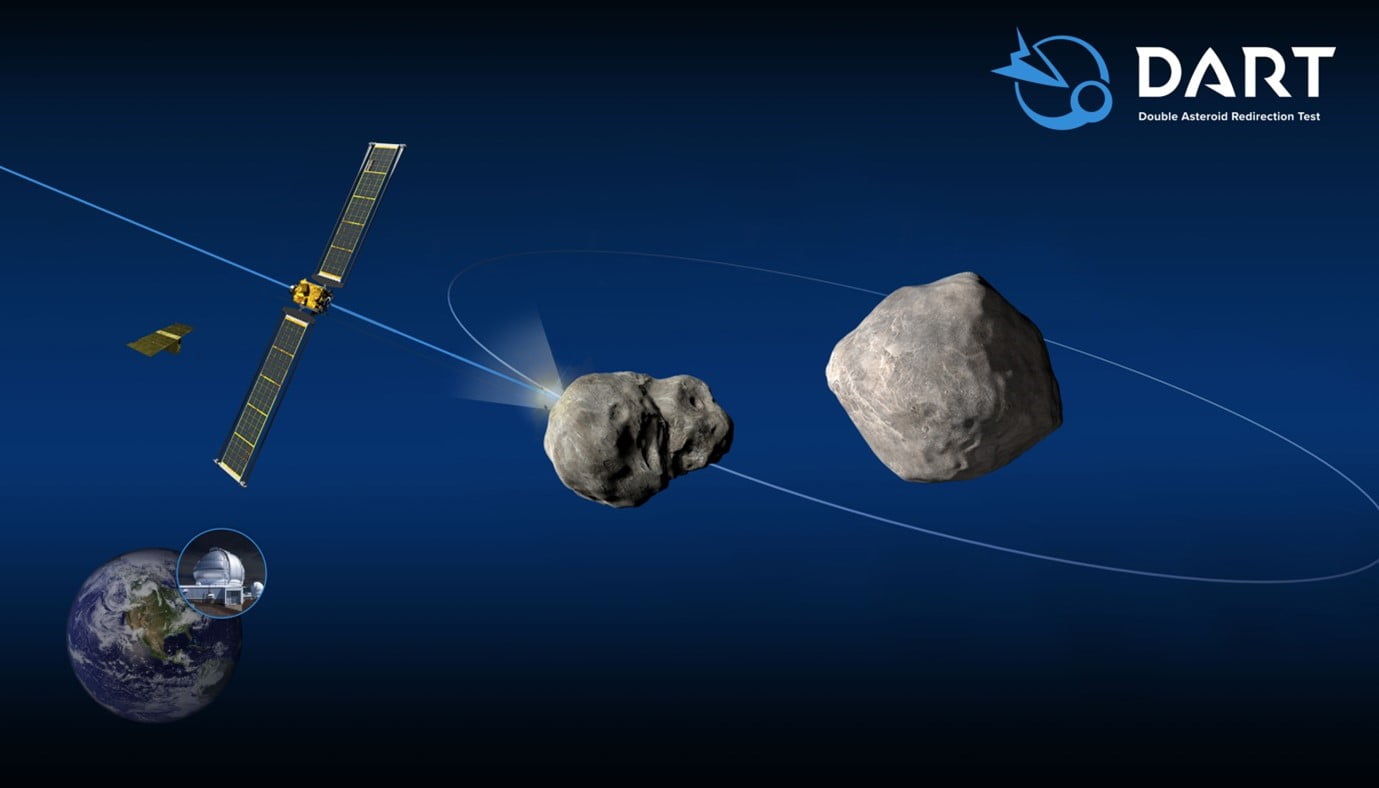
About:
- About DART mission: Aim of the mission is to understand shape and composition of the asteroids based on the change in its orbit and based on the ejected material. DART weighs around 600 kilograms.
- DART will target Didymos till about 50 minutes before impact. Other technologies like the DRACO camera and Roll-Out Solar Arrays (ROSA) will also be tested for future space exploration.
- About Dimorphos: It is 160-metre-wide and orbits the much larger asteroid Didymos (about 780 metres wide). It poses no actual threat to Earth.
- Telescopes in use: Webb Telescope, Hubble and a CubeSat called LICIACube to take measurements of the changes in the system and transmit back images.
- DRACO, or Didymos Reconnaissance and Asteroid Camera for Optical navigation is a high-resolution camera to capture images of Didymos and Dimorphos while simultaneously supporting DART’s autonomous guidance system. Tt takes 38 seconds for one-way communication.
- CubeSat, LICIACube is built by Italian space agency, has 2 cameras and operates autonomously.
Source: Indian Express
Previous Year Question
Q.1) What is difference between asteroids and comets?
- Asteroids are small rocky planetoids, while comets are formed of frozen gases held together by rocky and metallic material.
- Asteroids are found mostly between the orbits of Jupiter and Mars, while comets are found mostly between Venus and mercury.
- Comets show a perceptible glowing tail, while asteroids do not.
Which of the statements given above is/are correct?
- 1 and 2 only
- 1 and 3 only
- 3 only
- 1, 2 and 3
Syllabus
- Prelims – Current Affairs
In news: Recently, twenty-six drugs, including the common gastrointestinal medicines ranitidine and sucralfate, have been deleted from the revised National List of Essential Medicines (NLEM) 2022.
Keys points:
- The National List of Essential Medicines was first compiled in 1996 and it was revised thrice earlier in 2003, 2011, and 2015.
- Three hundred and eighty-four drugs find place in the NLEM, 2022 with the addition of 34 drugs, while 26 from the previous list have been dropped.
What is NLEM?
- As per the World Health Organisation (WHO), Essential Medicines are those that satisfy the priority health care needs of the population.
- Ministry of Health and Family Welfare hence prepared and released the first National List of Essential Medicines of India in 1996 consisting of 279 medicines.
- The list is made with consideration to disease prevalence, efficacy, safety and comparative cost-effectiveness of the medicines.
- Such medicines are intended to be available in adequate amounts, in appropriate dosage forms and strengths with assured quality.
- They should be available in such a way that an individual or community can afford.
NLEM in India
- Drugs listed under NLEM — also known as scheduled drugs — will be cheaper because the National Pharmaceutical Pricing Authority (NPPA) caps medicine prices and changes only based on wholesale price index-based inflation.
- The list includes anti-infectives medicines to treat diabetes such as insulin — HIV, tuberculosis, cancer, contraceptives, hormonal medicines and anaesthetics.
- Companies selling non-scheduled drugs can hike prices by up to 10 per cent every year.
- Typically, once NLEM is released, the department of pharmaceuticals under the ministry of chemicals and fertilisers adds them in the Drug Price Control Order, after which NPPA fixes the price.
Source: The Hindu
Syllabus
- Prelims – History
Context: Maharashtra’s Deputy Chief Minister, and Assembly Speaker are in Moscow to unveil the statue of Lok Shahir (balladeer) Annabhau Sathe at the All-Russia State Library for Foreign Literature.
- An oil painting of Sathe, who passed away in 1969, will also be unveiled at the Moscow’s Indian consulate.
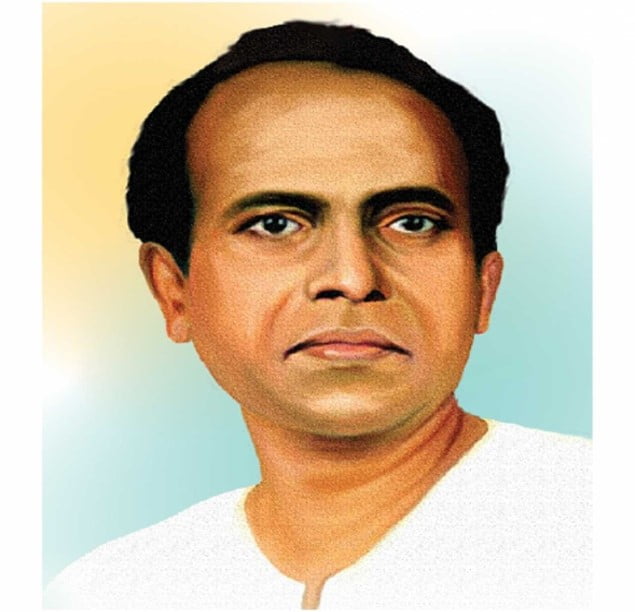
Who was Annabhau Sathe?
- Tukaram Bhaurao Sathe, who later came to be known as Annabhau Sathe, was born in a Dalit family on August 1, 1920 in Maharashtra’s Wategaon village in Satara district.
- In 1934, Mumbai witnessed a workers’ strike under the leadership of Lal Bawta Mill Workers Union in which he participated.
- During his days at the Matunga Labour Camp, he got to know R B More, an associate of Dr Babasaheb Ambedkar in the famous ‘Chavdar Lake’ satyagraha at Mahad, and joined the labour study circle.
- Being a Dalit, he was denied schooling in his village. It was during these study circles that he learned to read and write.
How did he start writing songs, ballads, and books?
- Sathe wrote his first poem on the menace of mosquitoes in the labour camp.
- He formed Dalit Yuvak Sangh, a cultural group and started writing poems on workers’ protests, agitations.
- He was part of Progressive Writers Association in which poets like Premchand, Faiz Ahmad Faiz, Manto, Ismat Chugtai, Rahul Sankrutyayan, Mulkraj Anand worked as its members.
- In 1939, he wrote his first ballad ‘Spanish Povada’.
How popular was his work?
- Several of his works like ‘Aklechi Goshta,’ ‘Stalingradacha Povada,’ ‘Mazi Maina Gavavar Rahili,’ ‘Jag Badal Ghaluni Ghav’ were popular across the state.
- His ‘Bangalchi Hak’ (Bengal’s Call) on the Bengal famine was translated into Bengali and later presented at London’s Royal Theatre.
- In 1943, he along with Amar Sheikh and Datta Gavhankar, formed the Lal Bawta Kala Pathak. The group toured across Maharashtra presenting programmes on caste atrocities, class conflict, and workers’ rights.
- In 1943, he was part of the process that led to the formation of the Indian Peoples Theatre Association (IPTA). He became its national president in 1949.
What was his Russian connection?
- He was a member of the Communist Party of India (CPI), and featured among the selected authors from India whose work was translated in Russian.
- Sathe’s literature is closely related to the then Communist Russian literature which was a mixture of reality and art.
- Six of his novels were turned into films and many translated into other languages, including Russian (Chitra or his famous Stalingradcha Povada on the battle of Stalingrad battle)
- In his travelogue ‘Maza Russiacha Pravas’ (My Travel to Russia), he writes that workers had come to see him off and how they wanted him to go and see slums of Russia and describe them after his return home.
Source: Indian Express
Previous Year Question
Q.1) Who among the following is associated with ‘Songs from Prison’, a translation of ancient Indian religious lyrics in English? (2021)
- Bal Gangadhar Tilak
- Jawaharlal Nehru
- Mohandas Karamchand Gandhi
- Sarojini Naidu
Q.2) Who among the following was associated as Secretary with Hindu Female School which later came to be known as Bethune Female School?
- Annie Besant
- Debandranath Tagore
- Ishwar Chandra Vidyasagar
- Sarojini Naidu
Syllabus
- Prelims – Current Affairs
In News: Recently-released Malayalam film Pathonpatham Noottandu (‘Nineteenth Century’) is based on the life of Arattupuzha Velayudha Panicker and on the stories of Nangeli and Kayamkulam Kochunni – associated with social reform in 19th-century Kerala which led to the large-scale subversion of the existing caste hierarchy and social order in the state.
About Arattupuzha Velayudha Panicker:
- He was a social reformer from the Ezhava community in Kerala who lived in the 19th century.
- He was born into a well-off family of merchants in Kerala’s Alappuzha district.
- One of the most influential figures in the reformation movement in the state, he challenged the domination of upper castes or ‘Savarnas’ and brought about changes in the lives of both men and women.
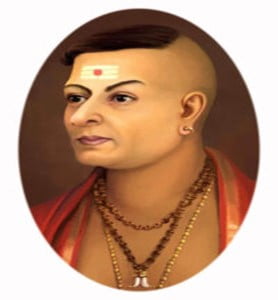
Contribution of Panicker:
- Built two temples dedicated to the Hindu god Shiva in villages of Kerela in 1852-54, in which members of all castes and religions were allowed entry.
- Protested for the rights of women belonging to Kerala’s backward communities.
| 1858 | Achippudava Samaram strike | to earn women belonging to oppressed groups the right to wear a lower garment that extended beyond the knees |
| 1859 | Ethappu Samaram | the struggle for the right to wear an upper body cloth by women belonging to backward castes |
| 1860 | Mukkuthi Samaram | rights of lower-caste women to wear ‘mukkuthi’ or nose-ring, and other gold ornaments that helped in challenging the social order and in raising the dignity of women belonging to the lower strata of society in public life |
| Karshaka Thozhilali Samaram | first-ever strike by agricultural labourers in Kerala – successful | |
| 1861 | Kathakali Yogam | First area-based schools for the classical dance form Kathakali for the Ezhava community |
- Panicker was a master of Kalaripayattu, the traditional martial arts practised in Kerala, which is also considered the oldest of its kind in India.
Post Death Recognition:
- Panicker was murdered by a group of upper-caste men in 1874 at the age of 49. This makes him the ‘first martyr’ of the Kerala renaissance.
- He was given the title of ‘Panicker’ by the then-king of Travancore in 1869.
- In 2005, the Kerala government inaugurated the Arattupuzha Velayudha Panicker Research Foundation and Cultural Centre in Thiruvananthapuram.
Miscellaneous:
- Nangeli, an Ezhava woman who lived in the 19th century in Alappuzha cut off her breasts to protest the ‘breast tax’ imposed by the Kingdom of Travancore on women belonging to lower castes. As per the breast tax – women from lower castes were not allowed to cover their breasts and were taxed heavily if they did so.
- Kayamkulam Kochunni, a Robin Hood-like figure in 19th century Alappuzha, has a shrine dedicated to him and a small museum as well.
Source: Indian Express
Syllabus
- Prelims – Geography
Context: Recently, under the aegis of the National Consortium of Regional Federations of Rubber Producer Societies India, an umbrella organisation for rubber growers, a day-long sit-in protest was staged in front of the Rubber Board headquarters in Kottayam, Kerala.
- After a moderate post-pandemic revival, the price of natural rubber (NR) has crashed to a 16-month low of ₹150 per kg (RSS grade 4) in the Indian market.
What has caused the sharp fall in prices?
- The current fall in prices is attributed primarily to a weak Chinese demand and the European energy crisis, along with high inflation and an import glut, among other things.
- China, which consumes about 42% of the global volume is sitting pretty on an ample inventory, especially in the form of block rubber from the Ivory Coast and compounded rubber from the Far East for their domestic tyre industry.
Where does India stand in terms of the production and consumption of natural rubber?
- India is currently the world’s fifth largest producer of natural rubber while it also remains the second biggest consumer of the material globally. (About 40% of India’s total natural rubber consumption is currently met through imports).
- On the demand side, the domestic consumption rose by 12.9%, to 12,38,000 tonnes in 2021-22 from 10,96,410 tonnes in the previous year.
How does the falling price affect the growers?
- The turnaround has exposed the growers — mostly small and medium scale — to a painful reckoning, contributing to wide-spread panic in Kerala, which accounts for nearly 75% of the total production.
- The impact of the price fall is felt more in the rural areas, where most people are solely dependent on rubber cultivation and have no other option but to cut expenses.
- If a reversal in prices seem distant, the trend may also trigger a crop switch or even a fragmentation of the rubber holdings in the long run.
What do the farmers demand?
- The key demands they have raised to the Union government include raising the import duties on latex products and compound rubber to make it on par with natural rubber, by either 25% or ₹30 per kg, whichever is lower.
- Its demands to the state government are to raise the replanting subsidy in Kerala, which remains at ₹25,000 per ha, and the support price of the crop under the price stabilisation scheme to ₹200 from ₹170.
How is the Rubber Board reacting?
- The Rubber Board professes to be relatively sanguine as it regards the price fluctuation as cyclical and rests its hopes on the projections of a remarkable shortage of rubber seven years from now.
- The agency, for the time being, is said to be also working on a set of programmes to arrest the free-falling of prices.
About Rubber Board:
- The Rubber Board is a statutory organization constituted under Section (4) of the Rubber Act, 1947 and functions under the administrative control of Ministry of Commerce and Industry.
- The Board is headed by a chairman appointed by the Central Government and has 28 members representing various interests of natural rubber industry.
- The Board’s headquarters is located at Kottayam in Kerala.
- The Board is responsible for the development of the rubber industry in the country by way of assisting and encouraging research, development, extension, and training activities related to rubber.
- It also maintains statistical data of rubber, takes steps to promote marketing of rubber and undertake labour welfare activities.
- The activities of the Board are exercised through Five Departments General Services, Extension & Advisory Services, Research Services (rubber Research Institute of India), Training (Rubber Training Institute) & Finance.
- There are 5 independent divisions viz., Internal audit, Planning, Market Promotion, Publicity & Public Relations, Vigilance.
Source: The Hindu
Previous Year Question
Q.1) With reference to the “Tea Board” in India, consider the following statements:
- The Tea Board is a statutory body.
- It is a regulatory body attached to the Ministry of Agriculture and Farmers Welfare.
- The Tea Board’s Head Office is situated in Bengaluru.
- The Board has overseas offices at Dubai and Moscow.
Which of the statements given above are correct? (2022)
- 1 and 3
- 2 and 4
- 3 and 4
- 1 and 4
Syllabus
- Prelims – Geography(maps)
In news: Azerbaijan said that it had completed its military objectives on the border with Armenia after a lull following the worst fighting between the arch-foes since their 2020 war.
- The former Soviet republics of Armenia and Azerbaijan have fought two wars — in the 1990s and in 2020 — over Nagorno-Karabakh.
- Ethnic Armenian separatists in Nagorno-Karabakh first broke away from Azerbaijan when the Soviet Union collapsed in 1991.
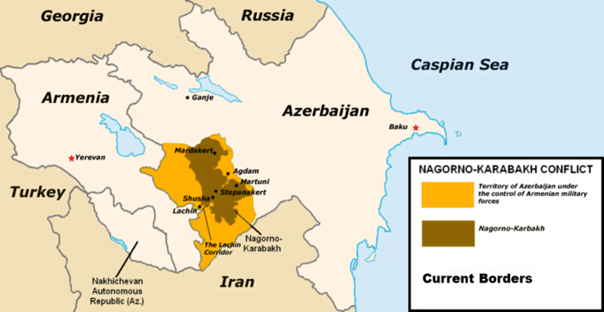
Must Read: Nagorno-Karabakh
Source: The Hindu
Previous Year Question
Q.1) Consider the following pairs:
Regions in News Country
- Anatolia – Turkey
- Amhara – Ethiopia
- Cabo Delgado – Spain
- Catalonia – Italy
How many pairs given above are correctly matched? (2022)
- Only one pair
- Only two pairs
- Only three pairs
- All four pairs
Syllabus
- Prelims – Economy
- Mains – GS 3 (Economy)
In News:
The Central government on July 1, introduced a windfall profit tax of ₹23,250 per tonne on domestic crude oil production, which has fluctuating rates.
- Finance Minister defended the windfall tax saying that it was done after full consultation with the industry and explained the introduction of the windfall tax as a way to rein in the “phenomenal profits” made by some oil refiners who chose to export fuel to reap the benefits of skyrocketing global prices while affecting domestic supplies
- It also imposed an additional excise levy on diesel, petrol and air turbine fuel (ATF) exports.
India has been importing discounted Russian oil – the windfall tax was targeted mainly at Reliance Industries Ltd and Russian oil major Rosneft-backed Nayara Energy
About Windfall Tax:
- The U.S. Congressional Research Service (CRS) defines a windfall as an “unearned, unanticipated gain in income through no additional effort or expense”.
- They are called so as the profits are derived from an external or unprecedented event or from something the firm actively did not participate in — for instance, the energy price-rise as a result of the Russia-Ukraine conflict.
- Typically, it’s levied as a one-off tax retrospectively over and above the normal rates of tax.
- In oil markets, price fluctuation leads to volatile or erratic profits for the industry. Hence, tax is levied to redistribute unexpected gains when high prices benefit producers at the expense of consumers.
- It can be used to fund social welfare schemes, and as a supplementary revenue stream for the government.
Need for Windfall Tax
- To narrow the country’s widened trade deficit on account of rising prices of oil, gas, and coal
- Rise in prices due to pandemic recovery and supply issues resulting from the Russia-Ukraine conflict and consequent increase in energy demands.
- The rising prices imply huge profits for energy companies while resulting in hefty gas and electricity bills for households – widening income inequality.
- The “grotesque greed” of big oil and gas companies eg. the largest energy companies in the first quarter of the year made combined profits of close to $100 billion.
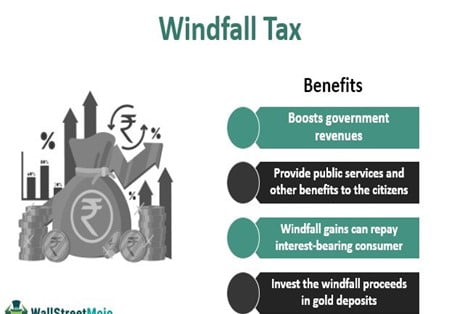
Challenges
- Adverse impact on investments: Introducing a temporary windfall profit tax reduces future investment because prospective investors will internalise the likelihood of potential taxes when making investment decisions and avoid uncertainty on account of retrospective nature of tax and influence of unexpected events and surprises.
- Such taxes are populist and politically opportune in the short term.
- The IMF said taxes in response to price surges may suffer from design problems—given their expedient and political nature.
- Difficulty in constituting true windfall profits; their determination and level of normalisation of profit. A CRS report, for instance, argues that if rapid increases in prices lead to higher profits, in one sense it can be called true windfalls as they are unforeseeable but on the other hand, companies may argue that it is the profit they earned as a reward for risk-taking to provide the end user with the petroleum product.
- Issue of determining who should be taxed — only the big companies responsible for the bulk of high-priced sales or smaller companies as well or whether producers with revenues or profits below a certain threshold should be exempt
IMF Guidelines on the matter
- Introduce a permanent tax on windfall profits from fossil fuel extraction.
- Use caution in temporary taxes on windfall profits because these tend to increase investor risk, may be more distortionary (especially if poorly designed or timed), and do not provide revenue benefits above those of a permanent tax on economic rents.
- The tax should be imposed on a share of economic rents (meaning excess profits).
Economic rents generally arise from fossil fuel extraction as a result of the fixed supply and diverse. Rent-targeting taxes raise revenue without reducing investment or increasing inflation.
- Encourage the switch to renewable energy, given the need for decarbonization in energy generation. Transitioning to renewable energy improves energy security.
- Design principles: Tax should apply to a clear measure of excess profit, tax should not apply to revenue as this can be inflationary and reduce investment. The tax should allow for carry forward of losses to ensure symmetrical treatment
Source: The Hindu
Syllabus
- Prelims – Current Affairs
- Mains – GS 3 (Science & Tech – IPR)
In news: The recent report of the Economic Advisory Council to the Prime Minister (EAC- PM), ‘Why India Needs to Urgently Invest in its Patent Ecosystem?’, highlights the significance of a robust patent system for a knowledge economy and for the promotion of technological innovations.
About India’s Patent Ecosystem
| Total number of patent applications | Increased by 48% between 2010-11 and 2020-21 (Increase largely driven by residents applications) |
| Share of residents in the total number of patent applications filed | More than doubled during the last decade
from 6.4% to 12.2%.
|
| Number of patent applications by residents | First time surpassed foreign applications |
| Share of abandoned patents in the total number of patent applications | Soared from 13.6% in 2010-11 to 48% in 2019-20 |
| Number of patent applications filed by the top 10 academic institutes and universities | Rose by more than two times in four years. |
Important provisions of the Patents Act:
- Section 9(1) – those applications accompanied by provisional specifications be supported by complete specifications within one year.
- Section 21(1) – re-file documents if the patent examiner finds them not meeting the requirements such as when applicants are not confident about their applications passing scrutiny and, therefore, do not pursue their applications or in case of innovations with short-life spans, that the
Challenges
- Long pendency of processing patent applications discourages applicants from following up on their applications.
- Increase in number of abandoned patent applications on account of not meeting the requirements under Sections 9(1) and 21(1) of the Patents Act
- Grew by almost 350%
- Perverse incentives which encourage the filing of patent applications even when the innovator knows that their claims will not pass scrutiny.
- India’s declining score for industry-academia collaboration indicator in The Global Innovation Index (GII) from 47.8 in 2015 to 42.7 in 2021, consequently, India’s ranking in this indicator in the GII declined from 48 to 65
- Industry-Academia Collaboration has been limited to niche research areas that have low commercial significance.
- Innovations from India have been scarce – a phenomenon prevalent across most sectors in India.
Solutions
- Increasing efficiency of processing patent applications will certainly improve the patent ecosystem in the country.
- Investigate the patent ecosystem more closely to connect the dots so that appropriate measures are adopted to improve the patent ecosystem, keeping in view the national innovation ecosystem.
- Eliminating perverse incentives
Way forward
- Patent system is a critical aspect of the national innovation ecosystem and investing in the patent ecosystem will help in strengthening the innovation capability of India
- Higher education sector is rising in prominence in the R&D spending and patenting landscape. The share of this sector in the gross domestic expenditure on R&D (GERD) has increased from 5% in 2013 to 7% in 2018, as per UNESCO’s data.
- Focus should be on increasing collaboration between industry and academia
Economic Advisory Council to the Prime Minister (EAC-PM):
- It is an independent non-constitutional, non-permanent body constituted to give advice on economic and related issues to the Government of India, specifically to the Prime Minister.
- Composition: Dr. Bibek Debroy (Chairman) and 6 part-time members.
- Objective: Analyzing any issue, economic or otherwise, referred to it by the Prime Minister and advising him thereon, addressing issues of macroeconomic importance and presenting views thereon to the Prime Minister. These could be either suo-motu or on reference from the Prime Minister or anyone else.
The Global Innovation Index (GII)
- Launched in 2007 by INSEAD, WIPO and Cornell University
- Goal: to find and determine metrics and methods that could capture a picture of innovation in society that is as complete as possible.
- India’s ranking in 2022 – 46th out of 130 countrie


National Intellectual Property Rights Policy 2016
- It is a vision document that encompasses and brings to a single platform all IPRs.
- It views IPRs holistically, taking into account all inter-linkages and thus aims to create and exploit synergies between all forms of intellectual property (IP), concerned statutes and agencies.
- It sets in place an institutional mechanism for implementation, monitoring and review. It aims to incorporate and adapt global best practices to the Indian scenario.
Source: The Hindu
Syllabus
- Mains – GS 2 (Governance); GS 3 (Development)
Context: As we are celebrating the Azadi Ka Amrit Mahotsav on the commemorate 75 years of independence. Undoubtedly, India has made significant positive change in this 75 years journey of independence however there are still certain areas which are not truly realized in order to fulfil the dreams of our founding fathers of the nation which are going to be completed in upcoming time.
Vision for India in the 100th year of its Independence:
Unleash the power of innovation to ensure a better life for all its citizens
- It is achievable by investing in innovative ideas and embracing entrepreneurship as an economic model of growth.
- Research and innovation, fuelled by technology, will catalyse the kind of non-linear growth that will make the country one of the world’s top three economies and bring it closer to developed nation status by 2047.
- In the direction of it, government has identified research, innovation, and technology as the key drivers of its VisionIndia@2047 and is making significant investments in these areas.
Role of Digital technology in realization of 2047 objectives/ ideas.
- Significant growth in areas of economy: Digital and data-backed innovation combined with ubiquitous and affordable internet will help India build a robust digital economy of the future.
- Better outcomes in scientific research and Healthcare system: The efficient use of digital technology will amplify the India’s value advantage and scientific excellence.
- Technology-led innovations will help India in rapid growth of healthcare system to the next level. Thus, it will help us build a national healthcare system, which is accessible, organised, accountable, affordable and, thus, resilient.
Changing health system to digital based healthcare system:
- Government has brough digital health sectors such as National Digital Health Mission, Ayushman Bharat Digital Mission (ABDM) to make healthcare-related regulations more flexible.
- The developments during COVID-19 pandemic have persuaded doctors to become tech-savvy and prompted the healthcare industry to invest in user-friendly digital solutions.
- These created a fertile environment for the emergence of low-cost, technology-led, and scalable innovations anchored in affordability and accessibility.
- Therefore, in order to reap the full benefits of this digital disruption of healthcare, India will need to coordinate policymaking, funding, and implementation.
However, currently healthcare investment by government accounts nearly 1.5 % GDP which is lower than developed nations—the US (16.9%), Germany (11.2%), France (11.2%) and Japan (10.9%)—spend even more.
Therefore, the government need to raise public spending on healthcare to 2.5 per cent of GDP by 2025. India must aspire to raise healthcare spending to 5 per cent of GDP by 2047 to truly deliver standardised and quality universal healthcare.
India’s vision in Pharmacy sector:
- The focus should on emerging opportunities across novel biologics, biosimilars, cell and gene therapies, high-end contract research and manufacturing services, mRNA etc, in the next 25 years, India is expected to capture a higher share of the pharmaceutical value chain which is amount grow from the current $50 billion to $500 billion by 2047 and rank among the top five countries in value terms and No. 1 in volume terms.
- The vision of achieving the $500 billion trajectory lies in our abilities to pursue cutting-edge research and innovation, conduct global-scale operations, and create a robust regulatory system.
The vision of 2047 is incomplete without active participation of women:
- As a nation, we must give women the opportunities and freedom to engage in productive work in the economic mainstream and liberate them from the shackles of unpaid labour.
- While Female participation in the formal labour force in India is currently estimated at a dismal 24 per cent which is one of the lowest among developing nations.
- It is estimated that the Indian economy could grow by an additional 60 per cent by 2025, adding $2.9 trillion, if women were represented in the formal economy at the same rate as men.
- Therefore, in order to realization the vision of 2047, India need to provide equal opportunities to its women, needs to focus more on women-centric programmes aimed at ensuring their education, health, economic security, safety, and fundamental rights.
- We must aim to raise the level of women’s participation in the formal sector to 50 per cent by 2047.
Realization of growth as a sustainable growth in future:
- By 2047, India needs to have fully integrated environmental sustainability in its growth models by focusing on renewable energy and reducing waste, effluents, emissions, and consumerism; and following the 3R s principles Reduce, reuse and recycling.
- Based on India’s commitment for environment protection such as Panchamrit in Glasgow summit, INDC goals to counter climate change and National Action Plan for Climate Change, India is moving towards the green economy transition phase.
Conclusion:
Therefore, by creating a digitally empowered society and knowledge economy that is transparent, efficient, and economically inclusive will enable India to emerge as the third largest economy in the world and a true global power by the 100th year of its Independence.
Must Read: India’s Clean Energy Target
Source: Indian Express
Syllabus
- Mains – GS 2 (Governance)
What is Anaemia?
- The WHO defines anaemia as a condition in which the number of red blood cells or the concentration of haemoglobin within them is lower than normal. This compromises immunity and impedes cognitive development.
- More than half of all women and children in India are anaemic, and that number has increased in the last three years. Between 2005 and 2015, anaemia decreased in India, albeit marginally.
- But recent data from the National Family Health Survey (NFHS-5) shows a reversal of those gains: Anaemia rates increased from 53% to 57% in women and from 58% to 67% in children in 2019-21.
What could be causing this dire result?
- The breadth of the NFHS survey allows us to investigate factors traditionally used to explain the prevalence of micronutrient outcomes such as anaemia.
- Grain-focused diets, with relatively lower consumption of iron-rich food groups such as meat, fish, eggs, and dark green leafy vegetables (DGLF), may be associated with higher levels of anaemia.
- However, the percentages of children and women consuming iron-rich food groups have increased from NFHS-4 to NFHS-5.
- High levels of anaemia are also often associated with underlying factors such as poor water quality and sanitation conditions that can negatively affect iron absorption in the body.
- However, both factors improved from NFHS-4 to NFHS-5. The percentage of the population living in households using improved sanitation facilities increased from 48.5% to 70.2%, while the percentage of households with access to improved sources of drinking water improved from 94.4% to 95, 9%.
- Women’s empowerment is another factor that can play an important role in determining the quantity and quality of food intake within the household.
- Women’s ownership of assets (such as land or a house), the ability to make decisions about the use of income, access to resources such as savings or credit, and participation in key household decisions can translate into increased awareness of and access to diverse, nutritious diets.
- But women’s empowerment in such domains has also improved from NFHS-4 to NFHS-5, suggesting that women’s decision-making alone cannot explain the increase in anaemia.
- Finally, the provision of health and nutrition interventions plays an important role in the prevalence of anaemia.
- But women’s folic acid intake during pregnancy and access to prenatal care has improved in the last five years. It is surprising, then, how anaemia rates have increased not only in mothers but also in children under the age of five.
- The NFHS anaemia data is an anomaly for several reasons.
It is also pertinent to invest in a better understanding of the various causes behind this increase in anaemia. At a minimum, we should go beyond haemoglobin to include other iron-specific biomarkers, such as serum ferritin, as well as markers of inflammation, to identify the role of iron deficiency as a driver of anaemia.
Conclusion:
- Rising numbers of anaemia make it almost impossible to meet the targets of the Anaemia Mukta Bharat programme: a reduction of 3% per year in all age groups from 2015-16 to 2022.
- India is also behind in achieving the global nutrition target for anaemia in women of reproductive age: a 50 percent decrease from the 2012 baseline by 2030.
- Thus, need of the hour is for rigorous research and informed policymaking that engages diverse stakeholders such as public health professionals, program implementers, policymakers, and other experts in this field. The data on anaemia tells us that something has gone wrong. It is critical that we find out what has changed and move quickly to address it.
Must Read: Malnutrition + Poshan Abhiyan
Source: Indian Express
Baba’s Explainer –CRISPR Technology
Syllabus
- GS-3: Science and Technology- developments and their applications and effects in everyday life.
- GS-3: Awareness in the fields of IT, Space, Computers and bio-technology
Context: Over the last two and a half years, as the coronavirus pandemic ravaged the world and exposed the vulnerabilities of humans to new diseases, scientists continued to push ahead with significant progress in utilising genome-editing technology.
Read Complete Details on CRISPR Technology
Daily Practice MCQs
Q.1) With reference to the “Rubber Board” in India, consider the following statements:
- The Rubber Board is a statutory body.
- It is a regulatory body attached to the Ministry of Agriculture and Farmers Welfare.
- The Rubber Board’s Head Office is situated in Alappuzha, Kerala.
Which of the statements given above is/are correct?
- 1 only
- 1 and 3 only
- 3 only
- 1 and 2 only
Q.2) Nagorno-Karabakh is a disputed region between?
- Sudan-South Sudan
- Sudan-Ethiopia
- Azerbaijan-Armenia
- Russia-Ukraine
Q.3) Consider the following statements
- NASA’s DART mission is scheduled to crash into Didymos.
- LICIACube is a CubeSat developed by NASA
Which of the statements given above is/are correct?
- 1 only
- 2 only
- Both 1 and 2
- Neither 1 nor 2
Comment the answers to the above questions in the comment section below!!
ANSWERS FOR ’14th September 2022 – Daily Practice MCQs’ will be updated along with tomorrow’s Daily Current Affairs.
ANSWERS FOR 13th September - Daily Practice MCQs
Q.1) – b
Q.2) – c
Q.3) – d













